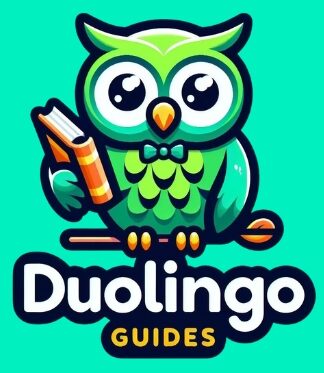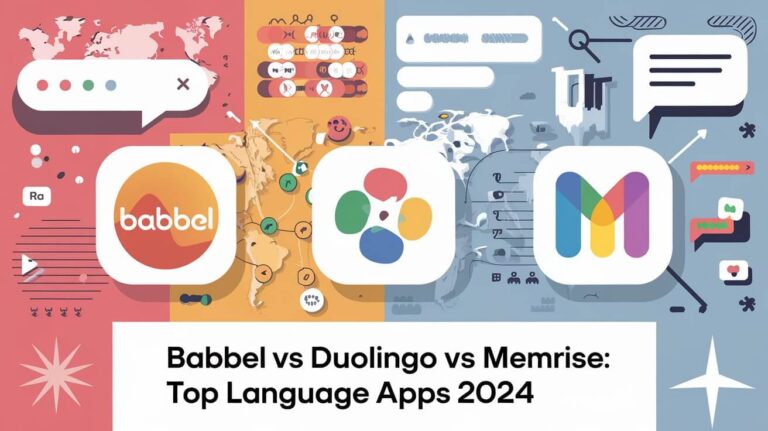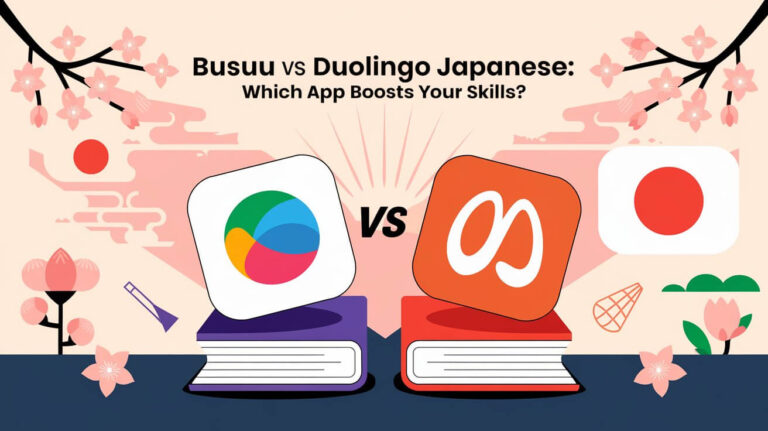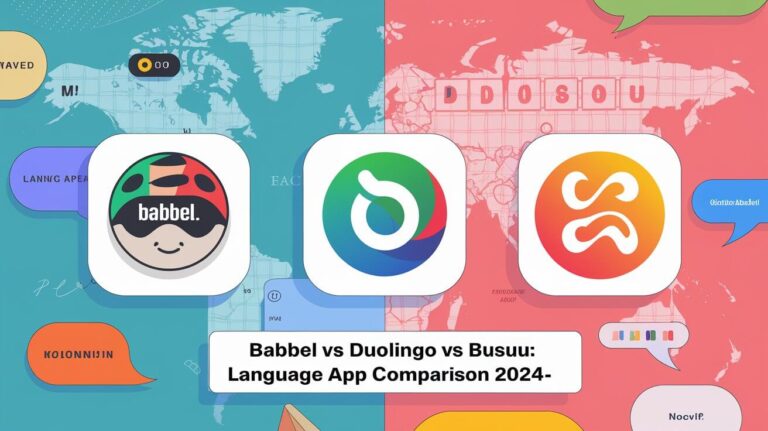In the world of language learning apps, Babbel and Duolingo stand out. They offer new ways to learn languages, appealing to many learners. This comparison looks at their special features, teaching styles, and how users feel about them. It helps you choose the best app for learning a new language.
Platform Introduction and Learning Philosophy
Two big names in language learning are Babbel and Duolingo. They both use apps to teach languages, but they reach out to different people in different ways.
Core Teaching Methodologies
Babbel teaches like a textbook, with lessons made by experts. It helps learners get ready for real-life conversations. Duolingo, on the other hand, makes learning fun with games and short lessons.
Target Audience Focus
Babbel is for adults who want to learn for work or travel. It builds strong skills in grammar and talking. Duolingo welcomes everyone, from hobbyists to serious learners, with its fun and structured lessons.
Learning Approach Differences
Babbel teaches you to use language in everyday life. Duolingo uses games to keep you interested and show your progress. These different ways help meet the needs of various learners.
Available Language Options
Babbel and Duolingo both offer a wide range of languages for learners. Babbel has 14 languages for English speakers, like Spanish, French, and German. Duolingo, on the other hand, has 40 languages, with some in beta.
Duolingo has more languages, but the quality can vary. Babbel focuses on detailed lessons for each language. This ensures a consistent learning experience.
The choice between Babbel and Duolingo depends on your needs. Duolingo is great for those who want many language options. Babbel is better for those who prefer structured lessons.
Interface and User Experience Comparison
Babbel and Duolingo have different ways to teach languages. Duolingo uses fun, cartoon-style elements to make learning interactive. Babbel, on the other hand, has a more serious design for adults.
Both apps are easy to use and let you move through lessons smoothly. But, Duolingo might attract those who like games and challenges. Babbel is better for those who like a straightforward, focused learning path.
Design Elements and Navigation
Duolingo has a bright, cartoon-filled design. Babbel is more simple and professional, focusing on learning.
Both apps are easy to navigate. Duolingo is great for those who like interactive learning. Babbel suits those who prefer a structured approach.
App Accessibility Features
Both Babbel and Duolingo make their apps accessible to everyone. They work on many devices and support screen readers. You can also change text size and contrast.
Platform Stability and Performance
Babbel and Duolingo are known for being reliable and fast. You’ll have a smooth learning experience without many problems.
Whether you choose Babbel or Duolingo depends on what you like. Each app has its own strengths that fit different learning styles.
Lesson Structure and Content Quality
Babbel and Duolingo take different paths in language lessons. Babbel’s lessons last 10-15 minutes and include interactive exercises. These exercises focus on using language in real-life situations. Duolingo’s lessons are shorter, lasting 5-10 minutes, but are also engaging.
The main difference is in the content quality and origin. Babbel’s lessons are made by linguists and education experts. This ensures a well-structured and personalized curriculum in 14 languages. Duolingo, while engaging, uses some user-generated content. This can lead to varying quality and consistency.
| Feature | Babbel | Duolingo |
|---|---|---|
| Lesson Duration | 10-15 minutes | 5-10 minutes |
| Lesson Structure | Incorporates various interactive exercises with a focus on natural language and real-world context | Utilizes engaging drills for vocabulary and grammar |
| Content Creation | Professionally created by linguists and education experts | Partially user-generated, resulting in variable quality |
| Language Options | 14 languages | Over 40 languages |
Both platforms offer great language learning modules. But Babbel’s structured lessons and expert content make it more reliable. It’s ideal for those wanting a deep understanding of a new language.
Babbel vs Duolingo
Direct Feature Comparison
The babbel vs duolingo spanish debate highlights their unique strengths and weaknesses. Babbel offers a wide range of languages, including English, Danish, Dutch, French, and German. Duolingo, on the other hand, has a vast list of languages, but some newer ones have less content.
Babbel’s teaching style is structured and textbook-like, focusing on practical skills. Duolingo, with its game-like approach, might give users a false sense of conversational ability.
Strength and Weaknesses Analysis
Babbel’s Babbel Live feature offers online group classes with professional teachers. Duolingo is free, but some features require a paid subscription. There’s a concern that Duolingo might push users towards paid options.
The pricing of which is better babbel or duolingo varies based on your needs. Babbel costs $8-$18 per month, while Duolingo is free. Babbel lessons last 10-15 minutes, and Duolingo’s are 5-10 minutes.
Both use speech recognition software. Babbel is known for better grammar instruction and explanations than Duolingo.
| Feature | Babbel | Duolingo |
|---|---|---|
| Languages Offered | Wider variety, including English | Extensive list, but some newer languages have less content |
| Teaching Methodology | Structured, textbook-like, focused on practical skills | Game-like approach, may give a false sense of progress |
| Verbal Practice | Moderate focus, with speech recognition | Light verbal practice, with speech recognition |
| Grammar Instruction | Layered into lessons, with better explanations | Relatively weaker grammar instruction |
| Pricing | $8-$18 per month | Free version available, with paid features |
| Lesson Length | 10-15 minutes | 5-10 minutes |
Pricing Models and Subscription Options
When comparing babbel vs duolingo cost, we see two different pricing models. Each platform aims to meet the needs of various users and budgets.
Duolingo offers a free version with ads and a premium subscription called Duolingo Plus for $6.99 a month. The premium version removes ads and lets you learn offline. It’s perfect for those who want a distraction-free learning experience.
Babbel, on the other hand, is a paid service with several subscription options. Prices range from $8 to $18 a month. Babbel also has a 30-day free trial. This lets users try out the platform before deciding to pay.
- Duolingo Plus: $6.99 per month
- Babbel: $8 to $18 per month, with a 30-day free trial
Both platforms offer more than just their main subscription plans. Babbel has a “Babbel Live” group coaching program. Duolingo’s “Super Duolingo” plan has a family version for $10 a month. This allows up to 6 users to enjoy premium features.
Choosing between babbel vs duolingo cost depends on your language learning goals, budget, and what you value most. Both platforms aim to make learning languages affordable and accessible for everyone.
Grammar Instruction Methods
Learning a new language is easier with the right approach to grammar. Babbel and Duolingo, two top language learning sites, teach grammar in different ways.
Teaching Approaches
Babbel blends grammar lessons into its courses. It gives learners quick, clear explanations of language rules. The lessons are practical, using real conversations to teach grammar.
Duolingo, on the other hand, teaches grammar in a more subtle way. It uses fun games to help learners get used to grammar rules through lots of practice.
Practice Exercises
- Babbel has many exercises to help learners practice grammar. These include fill-in-the-blank, sentence changes, and quizzes.
- Duolingo focuses on learning words and building sentences. It introduces grammar in a gentle way through these activities.
Both platforms help learners understand the language’s grammar well.
| Feature | Babbel | Duolingo |
|---|---|---|
| Grammar Instruction | Comprehensive grammar explanations integrated into lessons | More implicit, with grammar rules introduced through repeated practice |
| Grammar Practice Exercises | Varied exercises like fill-in-the-blank, sentence transformation, and interactive quizzes | Emphasis on vocabulary acquisition and sentence construction practice |
| Approach | Contextual, focusing on practical conversations and real-life dialogues | Gamified, with a focus on repetition and exposure to grammar patterns |
Speaking and Pronunciation Features
Learning a new language means mastering how to speak and pronounce words. Both Babbel and Duolingo help with this, but in different ways.
Babbel uses advanced technology to check how well you speak. It helps you practice talking in real-life situations. This makes your language skills sound more natural.
Duolingo also lets you practice speaking, but it’s not as detailed as Babbel. You can record yourself and get feedback on your pronunciation. But, it focuses more on single words and short phrases, not conversations.
| Feature | Babbel | Duolingo |
|---|---|---|
| Speaking Exercises | More robust, with advanced speech recognition technology | Basic verbal practice with less context |
| Speech Recognition Accuracy | More accurate and effective for developing conversational skills | Less advanced, providing feedback on individual words and short phrases |
| Conversational Practice | Encourages users to practice conversational phrases and dialogues | Focuses more on isolated word and phrase practice |
Babbel is better for learning to speak and pronounce words naturally. Duolingo is good for basic word and phrase practice.
Progress Tracking and Assessment Tools
Tracking progress and assessing performance help keep motivation high and learning continuous. Both Babbel and Duolingo offer tools to monitor language learning progress and track performance.
Achievement Systems
Duolingo uses a points system with streaks and leaderboards to make learning fun. Users earn points for lessons, daily streaks, and competing with others. This system motivates learners to keep practicing.
Babbel shows users their progress clearly through lessons and review sessions. Its tracking system lets learners see their achievements and focus on areas needing more work.
Performance Metrics
Both Babbel and Duolingo provide performance metrics to gauge language skills. Duolingo’s gamified approach might motivate some by showing progress and skills through scores and other measures.
Babbel focuses on lesson completion and reviewing material regularly. This structured approach is great for those aiming for language mastery.
Using both, along with other resources, can give a full picture of your language skills and where to improve.
Learning Resource Integration
Babbel and Duolingo both have special features to help with learning languages. Babbel started in 2007 and teaches 14 languages. It focuses on talking skills and includes grammar, vocabulary, and podcasts.
Duolingo, founded in 2011, offers over 30 languages for English speakers. It uses games to make learning fun. Duolingo’s tools, like stories and podcasts, are extra features but help track progress.
Babbel’s Integrated Approach
Babbel mixes its materials into its courses for a smooth learning path. You get grammar, vocabulary, and cultural insights with each lesson. This way, you learn everything you need to know about a language.
Duolingo’s Distinct Features
Duolingo has over 500 million users worldwide. It teaches many languages, including Welsh and Klingon. While its extra materials aren’t part of the main lessons, they’re great for extra practice.
Both Babbel and Duolingo follow the Common European Framework of Reference for Languages (CEFR). This means their lessons are structured and meet international standards.
Mobile App Functionality
Language learning apps like Babbel and Duolingo are great for those always on the move. They let you learn a new language anytime, anywhere. This makes studying a new language easy and convenient.
Offline Learning Capabilities
Duolingo Plus lets you download lessons for offline use. This means you can keep learning even without internet. Babbel also offers some offline features, so you can access certain content without the web.
Device Compatibility
Babbel and Duolingo work well on both iOS and Android devices. Their apps are updated often to work well on different phones and tablets. This ensures a smooth learning experience, no matter your device.
Choose Babbel for a structured learning path or Duolingo for a fun, game-like approach. Both language learning apps make mobile learning easy and flexible for your lifestyle.
Community and Support Features
Language learning is better with a community and support. Babbel and Duolingo offer different ways to help users.
Duolingo focuses on a language learning community. It has forums for users to connect, share, and help each other. This helps learners motivate and learn together.
Babbel, on the other hand, emphasizes user support from experts. It has email, chat, and phone support for questions. Babbel’s learning is more structured, even without a big community.
| Feature | Babbel | Duolingo |
|---|---|---|
| Community Engagement | Limited social features, more focused on professional support | Vibrant user community with forums, social interaction, and user-generated content |
| User Support | Comprehensive customer service with email, chat, and phone support | Community-based support, with users helping each other through forums and discussions |
| Content Creation | Reliance on professional linguists and curated content | Users actively contribute to content through translations and other community-driven initiatives |
Both Babbel and Duolingo meet different needs for community and support. Duolingo is great for those who love community and helping each other. Babbel is best for those who want professional guidance and a structured learning path.
Real-World Language Application
Babbel is the top pick for learning practical language skills. It focuses on real-world conversations and useful language use. This makes it stand out from Duolingo.
Babbel’s lessons are designed to help you use language in everyday situations. It guides you through complex skills. Duolingo, on the other hand, uses games to teach vocabulary but doesn’t cover as much.
- Babbel’s lessons last 10-15 minutes, giving you time for detailed explanations and practice.
- Duolingo’s lessons are shorter, lasting 5-10 minutes, and focus more on vocabulary and quick exercises.
- Babbel helps you reach B1 or B2 levels, while Duolingo goes up to A2 or B1.
Babbel Live offers group classes with real teachers for better conversational practice. Duolingo uses Duolingo Stories for a more immersive experience.
“Babbel’s focus on practical, real-life language use sets it apart from Duolingo’s more abstract, gamified approach. The structured lessons and Babbel Live classes ensure users develop practical language skills for genuine communication.”
In short, Babbel is the best for those wanting to learn language for real-world use. It offers practical skills and conversational practice.
Language Retention and Review Systems
Learning a new language is all about keeping what you learn. Both Babbel and Duolingo have ways to help you remember and keep up with your progress. They make sure you don’t forget what you’ve learned.
Babbel uses a special method called spaced repetition for reviews. It makes you go back to what you learned before, but not too soon. This helps you remember better. Each review is short, lasting only 2-3 minutes, so it’s easy to fit into your day.
- Babbel’s review system is designed to boost language memorization and improve review techniques.
- The spaced repetition approach helps learners retain vocabulary, grammar, and conversational skills more effectively.
Duolingo also has a review system, but it’s a bit different. It mixes review into its lessons and practice sessions. This way, review is part of the learning process.
“Babbel’s spaced repetition system is a game-changer for language memorization. The targeted review sessions really help cement the concepts I’ve learned.”
Both platforms know how important it is to review and practice regularly. But Babbel’s method might be better for those who want to really master a language. It’s more focused on keeping your skills sharp over time.
In Conclusion
Babbel and Duolingo have different ways to teach languages, fitting various learners’ needs. Babbel is great for those who want to learn deeply, with its focus on real-life skills and clear grammar. It also uses audio from native speakers, making it sound natural.
For those interested in “babbel vs duolingo french” or “duolingo vs babbel for spanish,” Babbel’s structured lessons are a strong choice. It emphasizes using language in everyday situations.
Duolingo, on the other hand, is perfect for casual learners or those on a tight budget. It’s free and offers a lot of content, including rare languages like Navajo and Hawaiian. Duolingo uses games and repetition to make learning fun and engaging.
Picking between Babbel and Duolingo depends on what you want to achieve and how much you’re willing to spend. Babbel is ideal for serious learners who want a deep dive into language. Duolingo is great for those who enjoy a more playful, free way to learn.







